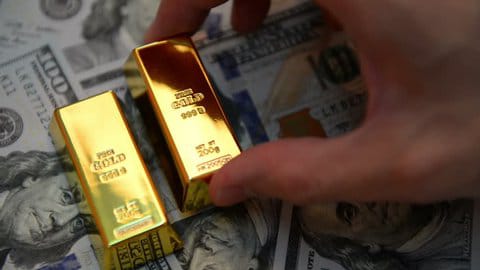The gold price trends (XAU/USD) surged to a new record high on Monday, driven by several key factors. One of the primary reasons for this rise is the weakening of the US dollar, along with expectations of interest rate cuts by the Federal Reserve. Additionally, growing geopolitical risks, particularly in the Middle East, have caused investors to seek safe-haven assets like gold.
With potential rate cuts ahead, non-interest-bearing assets like gold are becoming more attractive. The combination of these factors creates a perfect environment for gold prices to continue their upward momentum.
Economic Data Could Influence Gold’s Movement
As investors watch the gold market closely, the upcoming US Purchasing Managers Index (PMI) data, due later today, may significantly impact the price. If the data exceeds expectations, it could strengthen the US dollar, which may apply downward pressure on gold prices. However, if the results are weaker, gold may remain well-supported.
In times of uncertainty, many investors turn to gold, and this trend continues as we head into the second half of the year. Gold, traditionally seen as a store of value during economic instability, continues to shine as other markets face turbulence.
Geopolitical Risks and Safe-Haven Demand
One of the significant driving forces behind the current gold price surge is the intensifying geopolitical situation in the Middle East. Over the weekend, Hezbollah and Israel exchanged heavy fire, with missile strikes penetrating deep into northern Israeli territory. This escalation prompted investors to shift their focus toward safe-haven assets like gold.
According to analysts at FxPro, the forced liquidation of short positions might lead to even higher gold prices, especially as the US dollar holds steady against a basket of major currencies.
The Middle East conflict and ongoing economic uncertainties will likely keep gold prices at elevated levels for the near future. Investors seeking to hedge against these risks often flock to gold, further boosting its price.
Federal Reserve’s Role in Gold Price Trends
Recent comments from US Federal Reserve officials have also played a part in the gold market’s rise. Fed Philadelphia President Patrick Harker and Fed Governor Michelle Bowman emphasized the need for careful recalibration of interest rates to combat inflation. These comments have solidified the market’s expectation that the Federal Reserve may cut rates in the future, further supporting gold’s value.
At the same time, Fed Governor Christopher Waller hinted that the central bank could slow down on rate cuts depending on incoming data, but the possibility of deeper rate cuts still lingers.
Gold’s Technical Analysis

From a technical standpoint, gold remains in a strong bullish trend. On the daily chart, the price remains well above the critical 100-day Exponential Moving Average (EMA). However, the 14-day Relative Strength Index (RSI) is currently near 70.50, indicating that gold may be in overbought territory.
Gold is approaching a significant resistance level near its all-time high of $2,625. A clear break above this level could set the stage for a rise to $2,700, an important psychological level for traders. On the downside, if gold falls below $2,600, the next major support area lies near $2,560, which could lead to further declines toward $2,485.
Conclusion
With the ongoing geopolitical tensions and the Federal Reserve’s anticipated rate cuts, gold prices are likely to remain strong in the near future. Investors will continue to monitor these events closely for any potential shifts in market sentiment.
Stay updated with the latest gold market trends at Daily Gold Signal.




